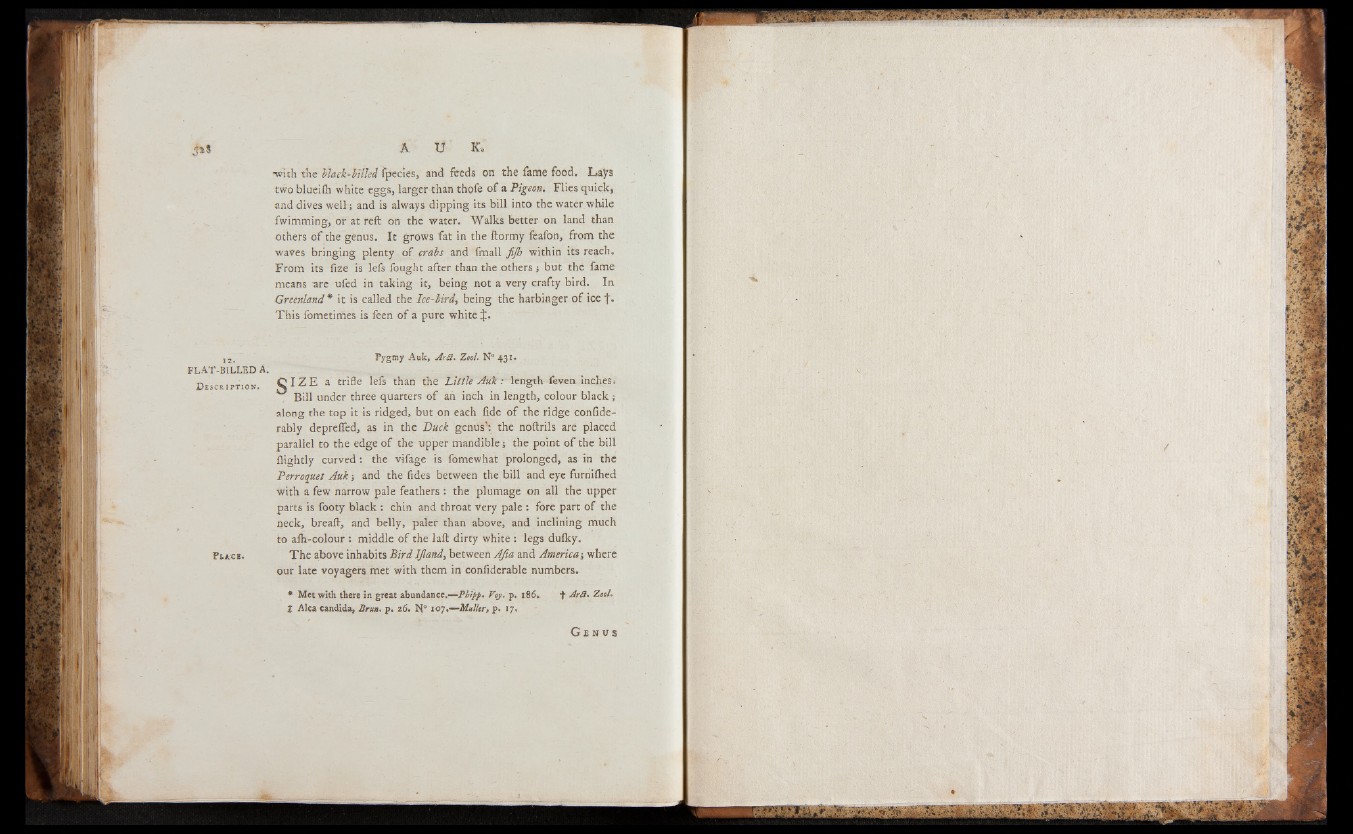
jaS A U K,
-with the Hack-Filled fpecies, and feeds on the fame food. Lays
two blueilh white eggs, larger than thole of a Pigeon. Flies quick,
and dives well; and is always dipping its bill into the water while
fwimming, or at reft on the water. Walks better on land than
others of the genus. It grows fat in the ftormy fealbn, from the
waves bringing plenty of crabs and fmall fijh within its reach.
From its fize is lefs fought after than the others ; but the fame
means are ufed in taking it, being not a very crafty bird. In
Greenland* it is called the Ice-bird, being the harbinger of ice f .
This fometimes is feen of a pure white %.
FLAT-BILLED A.
D e s c r i p t io n.
Pi ace.
Pygmy Auk, ArA. Zool. N° 431.
C I Z E a trifle lefs than the Little Auk: length feven inches 1
Bill under three quarters of ah inch in length, colour black ;
along the top it is ridged, but on each fide of the ridge confide-
rably depreffed, as in the Duck genust the noftrils are placed
parallel to the edge of the upper mandible j the point of the bill
flightly curved: the vifage is fomewhat prolonged, as in the
Perroquet Auk; and the fides between the bill and eye furnifhed
with a few narrow pale feathers : the plumage on all the upper
parts is footy black : chin and throat very pale : fore part of the
neck, breaft, and belly, paler than above, and inclining much
to alh-colour : middle o f the laft dirty white : legs dulky.
The above inhabits Bird IJland, between Afia and Americaj where
our late voyagers met with them in confiderable numbers.
* Met with there in great abundance.— Pbipp. Voy. p. 186.
4 Aril. Zool.
:fc
t AIca Candida, Bren. p. 26. N° 107.—Muller, p. 17.
G e n u s